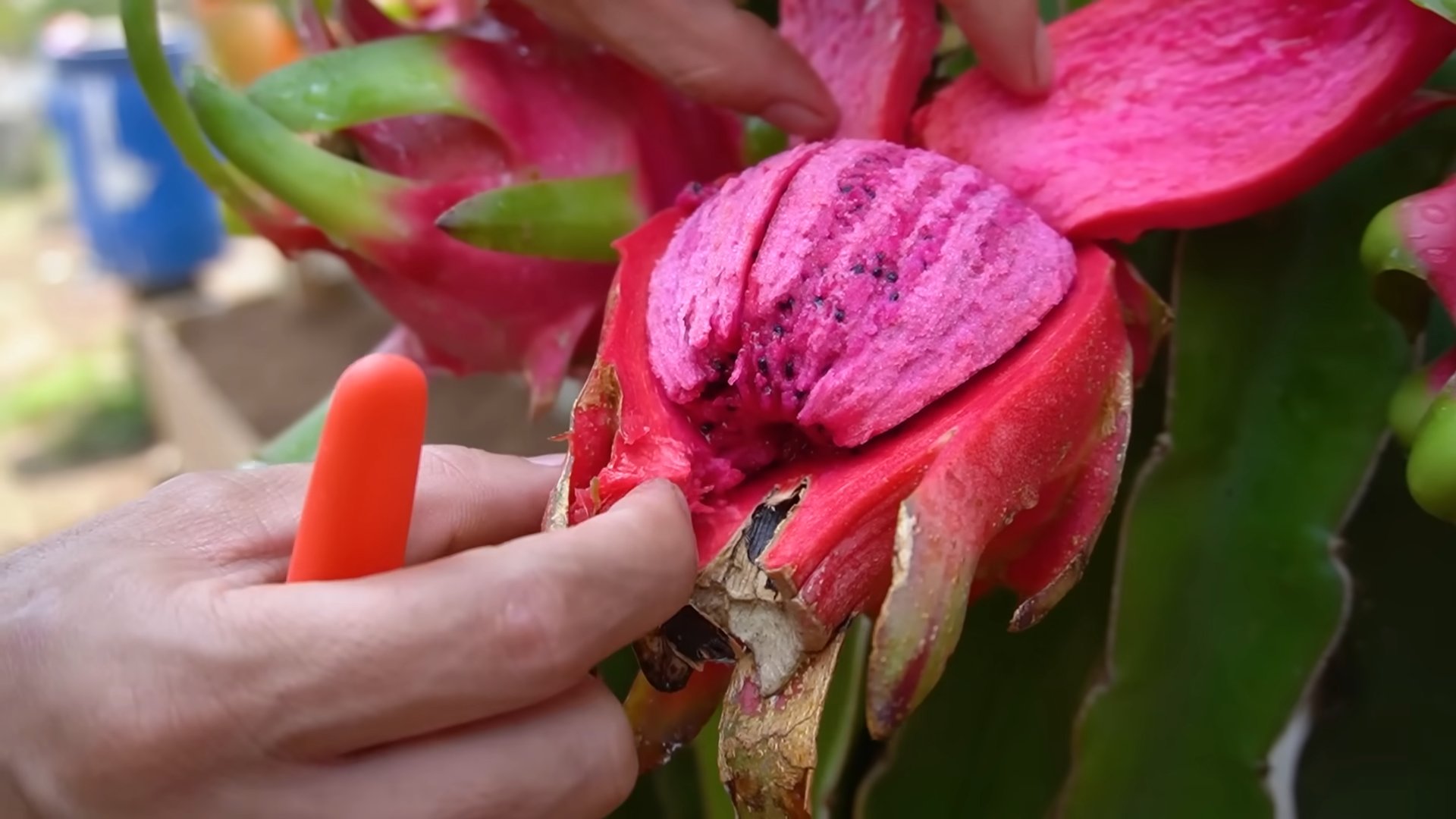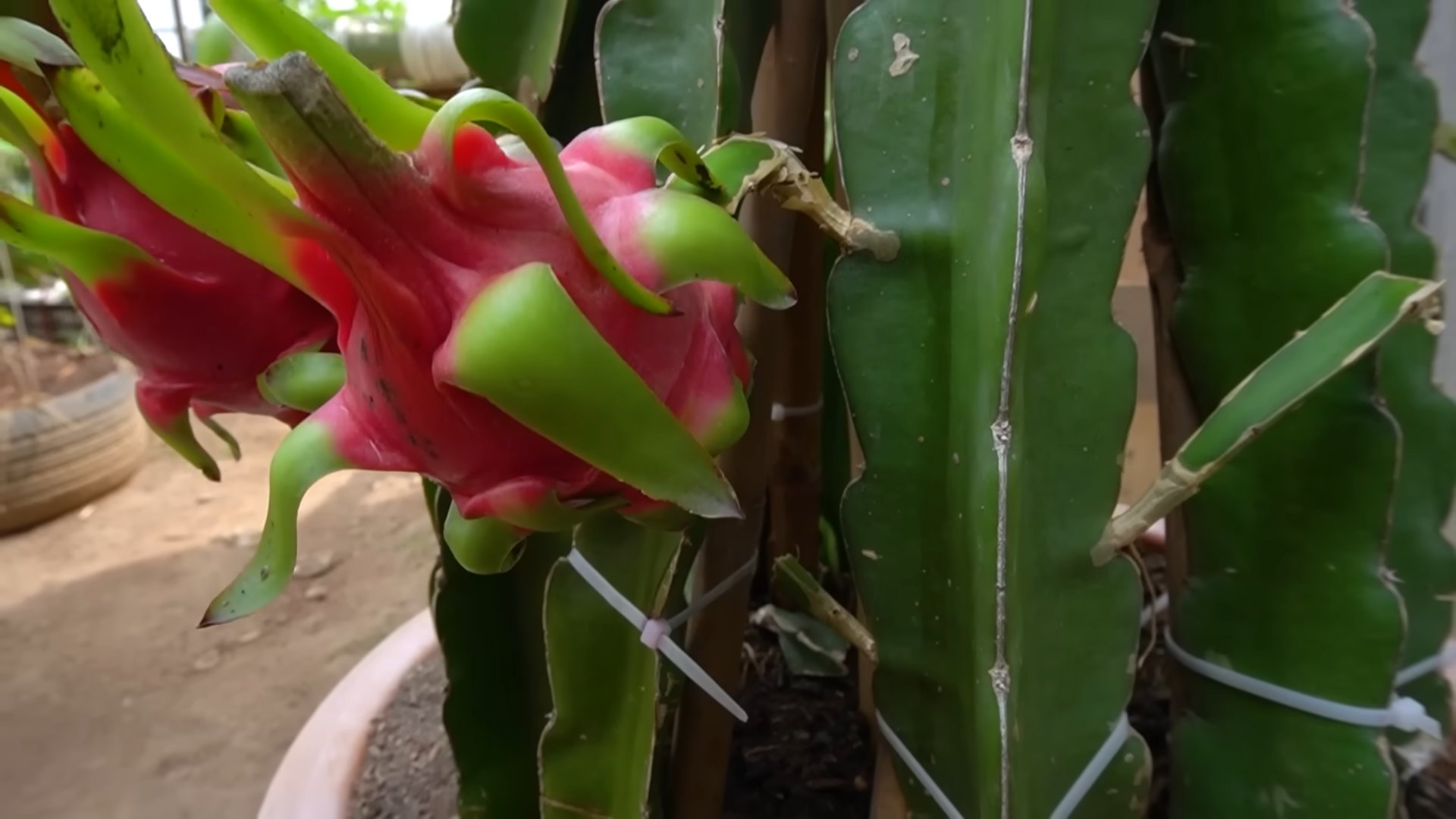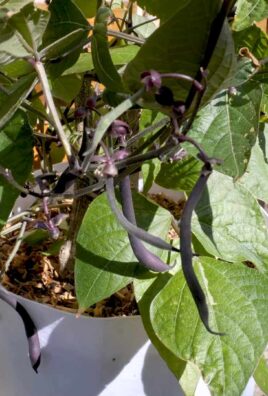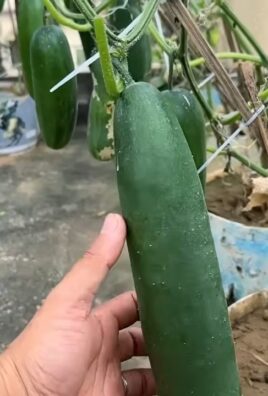Dragon Fruit Growing for Beginners: Ever dreamt of harvesting your own vibrant, exotic dragon fruit right in your backyard? I know I have! There’s something incredibly satisfying about nurturing a plant from a tiny cutting to a fruit-bearing beauty. This isn’t just about gardening; it’s about connecting with nature and enjoying the fruits (literally!) of your labor.
Dragon fruit, also known as pitaya, has a rich history rooted in Central and South America, where it was a staple food for centuries. Today, its popularity has exploded worldwide, thanks to its unique appearance, delicious flavor, and impressive health benefits. But let’s be honest, buying dragon fruit at the store can be expensive! That’s where this DIY guide comes in.
I’m going to share my tried-and-true secrets for successful dragon fruit growing for beginners. Whether you have a sprawling garden or just a sunny balcony, I’ll show you how to cultivate these fascinating plants with ease. Imagine the satisfaction of serving your friends and family homegrown dragon fruit – they’ll be amazed! This guide will cover everything from selecting the right variety and preparing the soil to providing proper support and protecting your plants from pests. So, grab your gardening gloves, and let’s embark on this exciting journey together!

Growing Dragon Fruit: A Beginner’s Guide to a Tropical Treat
Hey there, fellow plant enthusiasts! Ever dreamt of growing your own exotic fruit? Well, let me tell you, dragon fruit is surprisingly easy to cultivate, even if you’re a complete beginner. I’m going to walk you through everything you need to know to get started, from choosing the right variety to harvesting your first delicious dragon fruit. Get ready to add a touch of the tropics to your garden!
Choosing Your Dragon Fruit Variety
Before we dive into the nitty-gritty, let’s talk about varieties. Dragon fruit comes in a range of colors, both inside and out, and the taste can vary too. Here’s a quick rundown of some popular options:
* **White-fleshed varieties (e.g., ‘Hylocereus undatus’):** These are the most common and often the easiest to find. They have a mild, slightly sweet flavor.
* **Red-fleshed varieties (e.g., ‘Hylocereus costaricensis’):** These tend to be sweeter and have a more intense flavor than the white-fleshed varieties. They also stain a bit more, so be careful!
* **Pink-fleshed varieties:** These offer a flavor profile somewhere between white and red.
* **Yellow-skinned, white-fleshed varieties (e.g., ‘Hylocereus megalanthus’):** These are known for their particularly sweet and aromatic fruit, but they can be a bit more challenging to grow.
Consider your climate and taste preferences when choosing a variety. If you’re in a cooler climate, a self-pollinating variety might be a better choice.
Setting Up Your Dragon Fruit Planting Area
Dragon fruit are vining cacti, so they need a strong support structure to climb on. Think of it like building a little jungle gym for your plant! Here’s what you’ll need:
* **A sturdy post or trellis:** This will be the main support for your dragon fruit. A concrete or wooden post that’s at least 5-6 feet tall is ideal. You can also use a strong trellis system.
* **A tire or circular frame (optional):** Attaching a tire or circular frame to the top of the post provides a platform for the dragon fruit to branch out and hang down. This encourages fruiting.
* **Well-draining soil:** Dragon fruit don’t like soggy roots, so good drainage is crucial.
* **Sunlight:** Dragon fruit need at least 6-8 hours of sunlight per day.
Step-by-Step Planting Guide
Alright, let’s get our hands dirty! Here’s how to plant your dragon fruit:
1. **Prepare the soil:** Dragon fruit thrive in well-draining soil. If your soil is heavy clay, amend it with plenty of organic matter like compost, perlite, or sand. I usually mix equal parts of garden soil, compost, and perlite for a perfect blend.
2. **Dig the planting hole:** Dig a hole that’s twice as wide as the root ball of your dragon fruit cutting or seedling.
3. **Position the plant:** Gently remove the dragon fruit from its container and place it in the hole. Make sure the top of the root ball is level with the surrounding soil.
4. **Backfill the hole:** Fill the hole with the prepared soil, gently tamping it down around the base of the plant.
5. **Water thoroughly:** Water the newly planted dragon fruit deeply to help settle the soil and encourage root growth.
6. **Attach the plant to the support:** Use soft ties or twine to gently attach the dragon fruit stem to the post or trellis. As it grows, you’ll need to continue tying it up to provide support. Be careful not to tie it too tightly, as this can damage the stem.
7. **Mulch around the base:** Apply a layer of mulch around the base of the plant to help retain moisture and suppress weeds. I like to use wood chips or straw.
Caring for Your Dragon Fruit
Now that your dragon fruit is planted, it’s time to learn how to care for it. Here’s what you need to know:
* **Watering:** Dragon fruit are drought-tolerant, but they still need regular watering, especially during the growing season. Water deeply when the top inch of soil feels dry. Avoid overwatering, as this can lead to root rot. In the winter, reduce watering frequency.
* **Fertilizing:** Dragon fruit benefit from regular fertilization. Use a balanced fertilizer (e.g., 10-10-10) every 1-2 months during the growing season. You can also supplement with organic fertilizers like compost tea or worm castings. I personally love using a slow-release fertilizer in the spring to give them a good boost.
* **Pruning:** Pruning is essential for maintaining the shape of your dragon fruit and encouraging fruiting. Prune away any dead or damaged stems, as well as any stems that are growing in the wrong direction. The goal is to create a well-ventilated plant with plenty of sunlight penetration.
* **Pest and disease control:** Dragon fruit are generally pest-resistant, but they can occasionally be affected by pests like aphids or mealybugs. If you notice any pests, treat them with insecticidal soap or neem oil. Root rot is the most common disease, so be sure to avoid overwatering.
* **Pollination:** Most dragon fruit varieties are self-pollinating, but some require cross-pollination to produce fruit. If you’re growing a variety that requires cross-pollination, you’ll need to plant two different varieties nearby. You can also hand-pollinate the flowers using a small paintbrush. The flowers only open at night, so you’ll need to be a night owl to do this!
Encouraging Fruit Production
Getting your dragon fruit to actually produce fruit is the ultimate goal, right? Here are a few tips to help you along the way:
* **Provide adequate sunlight:** Dragon fruit need plenty of sunlight to flower and fruit. Make sure your plant is getting at least 6-8 hours of direct sunlight per day.
* **Fertilize regularly:** As mentioned earlier, regular fertilization is crucial for fruit production. Use a fertilizer that’s high in phosphorus and potassium to encourage flowering.
* **Prune properly:** Pruning helps to promote new growth, which is where the flowers will form.
* **Water consistently:** Consistent watering is important for fruit development. Avoid letting the soil dry out completely, especially during flowering and fruiting.
* **Consider hand-pollination:** Even if your variety is self-pollinating, hand-pollination can sometimes increase fruit set.
Harvesting Your Dragon Fruit
After all your hard work, it’s finally time to harvest your dragon fruit! Here’s how to tell when they’re ripe:
* **Color change:** The skin of the dragon fruit will change color from green to bright red, pink, or yellow, depending on the variety.
* **Slightly soft to the touch:** The fruit should be slightly soft to the touch, but not mushy.
* **Wings start to dry:** The “wings” or scales on the fruit will start to dry out and turn brown.
To harvest, simply twist the fruit off the stem. Be careful not to damage the plant.
Troubleshooting Common Problems
Even with the best care, you might encounter some problems along the way. Here are a few common issues and how to address them:
* **Yellowing leaves:** This could be a sign of overwatering, underwatering, or nutrient deficiency. Check the soil moisture and adjust your watering accordingly. Fertilize with a balanced fertilizer.
* **Lack of flowering:** This could be due to insufficient sunlight, lack of fertilization, or improper pruning. Make sure your plant is getting enough sunlight and fertilize regularly. Prune to encourage new growth.
* **Fruit drop:** This can be caused by inconsistent watering, extreme temperatures, or lack of pollination. Water consistently and protect your plant from extreme temperatures. Consider hand-pollination.
* **Root rot:** This is usually caused by overwatering. Make sure your soil is well-draining and avoid overwatering. If you suspect root rot, you may need to repot the plant in fresh soil.
Enjoying Your Homegrown Dragon Fruit
Congratulations! You’ve successfully grown your own dragon fruit. Now it’s time to enjoy the fruits of your labor. Dragon fruit can be eaten fresh, added to smoothies, or used in desserts. The possibilities are endless! I love slicing it up and adding it to a fruit salad or blending it into a refreshing smoothie.
Growing dragon fruit is a rewarding experience that anyone can enjoy. With a little bit of care and attention, you can have your own tropical oasis right in your backyard. Happy growing!

Conclusion
So, there you have it! Growing dragon fruit from seed might seem daunting at first, but with a little patience and the right approach, you can cultivate your own vibrant, exotic fruit right in your backyard or even indoors. This DIY trick for starting your dragon fruit journey is a must-try for several compelling reasons.
First and foremost, it’s incredibly rewarding. There’s something truly special about nurturing a plant from its earliest stages and watching it flourish. The satisfaction of harvesting your own dragon fruit, knowing you guided it from a tiny seed to a fruiting vine, is unparalleled.
Secondly, it’s cost-effective. Purchasing mature dragon fruit plants can be expensive. Starting from seed allows you to grow multiple plants for a fraction of the cost. This is especially beneficial if you’re looking to create a larger dragon fruit garden or simply want to experiment with different varieties.
Thirdly, it opens up a world of possibilities. While the process described focuses on growing dragon fruit from seed, you can easily adapt it to different varieties. Experiment with different soil mixes, light conditions, and watering schedules to see what works best for your specific environment.
Consider these variations to personalize your dragon fruit growing experience:
* Grafting: Once your seedlings are established, you can graft them onto more mature dragon fruit plants to potentially accelerate the fruiting process.
* Hydroponics: For a more controlled environment, explore growing your dragon fruit seedlings hydroponically. This method can provide precise nutrient delivery and optimal growth conditions.
* Container Gardening: If you have limited space, dragon fruit thrives in containers. Choose a large pot with good drainage and provide a sturdy trellis for the vine to climb.
* Different Varieties: Don’t limit yourself to just one type of dragon fruit. Experiment with different varieties, such as white-fleshed, red-fleshed, or yellow-fleshed, to discover your favorites.
Ultimately, this DIY trick for dragon fruit growing beginners is about more than just growing fruit; it’s about connecting with nature, learning new skills, and enjoying the fruits (pun intended!) of your labor.
We wholeheartedly encourage you to give this method a try. Don’t be afraid to experiment, adapt, and learn along the way. The journey of growing your own dragon fruit is an adventure in itself.
And most importantly, we want to hear about your experiences! Share your successes, challenges, and tips in the comments below. Let’s create a community of dragon fruit enthusiasts and learn from each other. Happy growing!
Frequently Asked Questions (FAQ)
Q: How long does it take for dragon fruit seeds to germinate?
A: Dragon fruit seeds typically germinate within 1 to 4 weeks, but it can sometimes take longer depending on the environmental conditions. Maintaining consistent moisture and warmth is crucial for successful germination. Make sure the soil stays moist but not waterlogged. A humidity dome or plastic wrap can help retain moisture.
Q: What kind of soil is best for dragon fruit seedlings?
A: Dragon fruit seedlings thrive in well-draining soil that is rich in organic matter. A good mix would be equal parts of potting mix, perlite, and compost. Perlite ensures good drainage, while compost provides essential nutrients. Avoid heavy clay soils, as they can retain too much water and lead to root rot.
Q: How much sunlight do dragon fruit seedlings need?
A: Dragon fruit seedlings need bright, indirect sunlight. Avoid direct sunlight, especially during the hottest part of the day, as it can scorch the delicate leaves. A location near an east-facing window is ideal. If you’re growing them outdoors, provide some shade during the afternoon. As the plants mature, they will tolerate more direct sunlight.
Q: How often should I water my dragon fruit seedlings?
A: Water your dragon fruit seedlings when the top inch of soil feels dry to the touch. Avoid overwatering, as this can lead to root rot. Dragon fruit prefers slightly drier conditions. During the growing season (spring and summer), you may need to water more frequently than during the dormant season (fall and winter).
Q: When should I transplant my dragon fruit seedlings?
A: Transplant your dragon fruit seedlings when they have developed several sets of true leaves and are large enough to handle without damaging them. This is usually around 2-3 months after germination. Choose a pot that is at least 6 inches in diameter and has good drainage.
Q: What kind of support do dragon fruit plants need?
A: Dragon fruit plants are climbing cacti and need a sturdy support structure to grow properly. A trellis, stake, or even a strong fence can be used. The support should be tall enough to accommodate the mature size of the plant, which can reach several feet in height.
Q: How long does it take for dragon fruit plants to produce fruit?
A: Dragon fruit plants grown from seed can take anywhere from 3 to 7 years to produce fruit. Grafted plants, on the other hand, may produce fruit in as little as 1 to 2 years. Patience is key when growing dragon fruit from seed.
Q: What are some common pests and diseases that affect dragon fruit plants?
A: Common pests that can affect dragon fruit plants include aphids, mealybugs, and scale insects. These pests can be controlled with insecticidal soap or neem oil. Common diseases include root rot and fungal infections. Proper watering and good air circulation can help prevent these diseases.
Q: Can I grow dragon fruit indoors?
A: Yes, you can grow dragon fruit indoors, but you’ll need to provide adequate light and support. Place the plant near a sunny window or use grow lights to supplement natural light. A large pot with good drainage is essential. You may also need to hand-pollinate the flowers to ensure fruit production.
Q: How do I pollinate dragon fruit flowers?
A: Dragon fruit flowers are nocturnal and typically open at night. They are pollinated by bats and moths in their natural habitat. If you’re growing dragon fruit indoors or in an area where these pollinators are not present, you may need to hand-pollinate the flowers. Use a small brush to transfer pollen from the stamen (male part) to the pistil (female part) of the flower.
Q: What are the signs that my dragon fruit plant is ready to fruit?
A: Mature dragon fruit plants will produce large, fragrant flowers that bloom at night. These flowers are a sign that the plant is ready to fruit. After pollination, the flower will wither and a small fruit will begin to develop. The fruit will typically ripen in about 30 to 50 days.
Q: How do I know when my dragon fruit is ripe?
A: A ripe dragon fruit will have a vibrant, even color and will be slightly soft to the touch. The “wings” or scales on the fruit will also start to dry out and turn brown. The fruit should easily detach from the vine when it’s ripe.
Q: What are the nutritional benefits of dragon fruit?
A: Dragon fruit is a good source of vitamins, minerals, and antioxidants. It is rich in vitamin C, iron, and fiber. It also contains prebiotics, which can promote gut health. Dragon fruit is a low-calorie fruit that can be a healthy addition to your diet.
Q: Can I eat the seeds of dragon fruit?
A: Yes, the seeds of dragon fruit are edible and are actually quite nutritious. They contain healthy fats and fiber. You can eat them along with the flesh of the fruit.




Leave a Comment